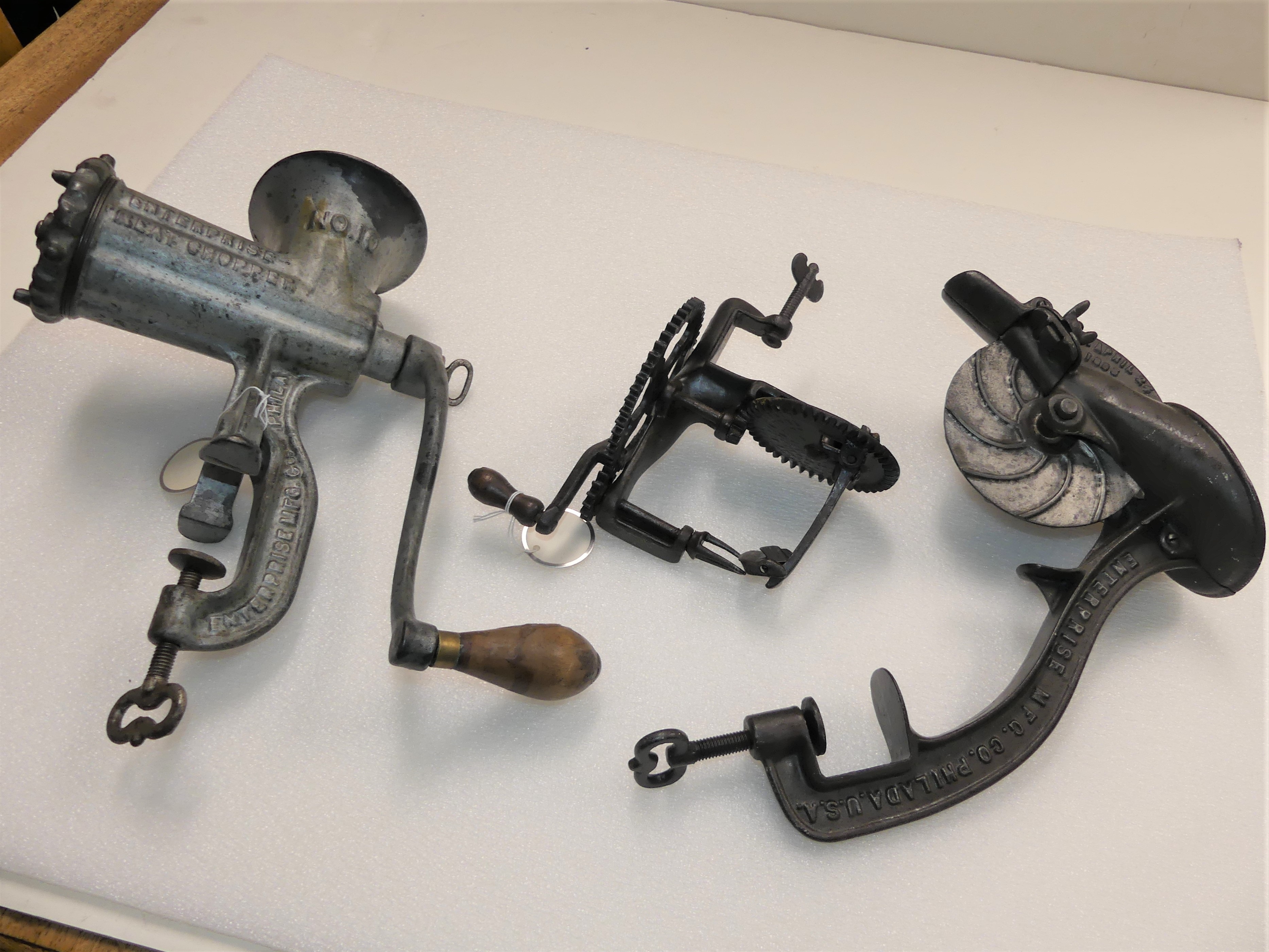
Cooking dominated the time and energy of the average woman in America during the early 1800s. As the century progressed, so did the technology in food preparation. This month’s featured artifacts are three devices used in the mid to late nineteenth century to alleviate physically arduous and tedious food preparation tasks. The artifacts are a meat grinder, an apple peeler and a cherry pitter, all of which are made of iron.
German inventor Karl Drais developed the meat grinder, or chopper, in the early nineteenth century. The idea was born out of a need to replicate the butcher shop. The basic hand-cranked grinder’s operating principle remains virtually the same today, except most are powered by electricity. Our grinder is a hand-cranked model made by Enterprise Manufacturing Company in 1886. It has a metal screw and a clamp that attaches the device to a table.
The eighteenth and nineteenth centuries saw a growing need for apples as a winter staple for food and drink. Paring, coring, and cutting enough apples for winter was a tedious task. Farmers developed a type of wooden apple parer, or peeler, but tools made of cast iron quickly took over the market. Industrialization in America and the increasing use of iron resulted in an explosion of patented iron apple parers. Over one hundred apple parer patents were granted between 1850 and 1890. The featured parer is composed of two large cogs and two small cogs that are operated by a handle with a three-pronged fork that pierces the apple and holds it in place for the paring. There is a clamp at the base for attaching the parer to a table. This particular parer was patented in 1854 and manufactured in 1856 by Lockey and Howland Company.
Food preparers became frustrated with the effort it took to cut around cherry pits to release the flesh from the small fruit. Cherry pitter devices, designed and perfected in the late 1800s, vastly reduced preparation time when making pies or other foods containing cherries. Enterprise Manufacturing Company made the cherry pitter in the park’s collection in 1895. The pitting mechanism consists of a wheel operated by a crank type handle. There is a larger mouth at the top for feeding in whole cherries and a smaller mouth below where the pits come out. The pitter has a screw and brace to attach it to a table.
Technological advancements in the kitchen were constant, and all were created to reduce time and labor. The three featured nineteenth century food preparation tools did just that.
